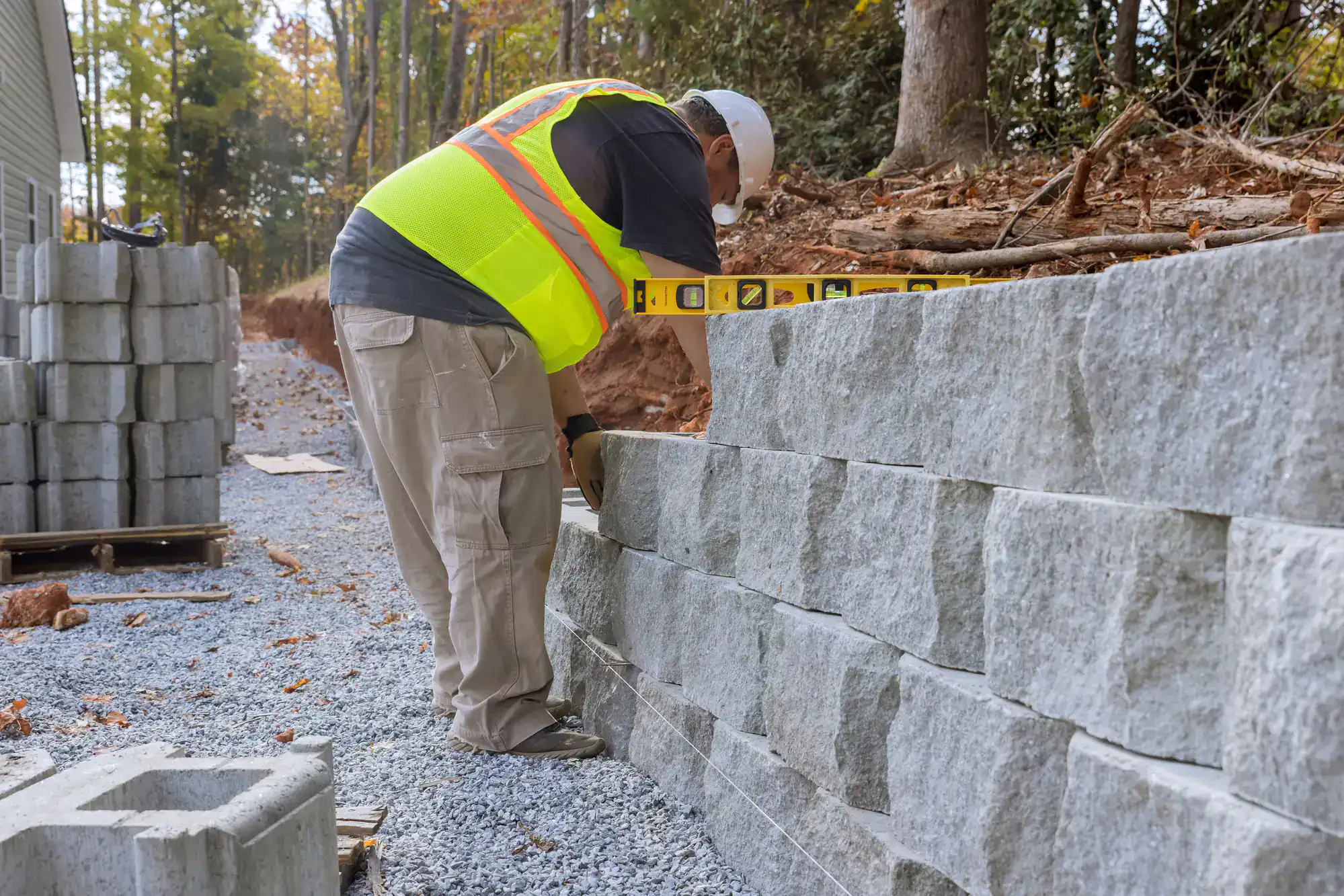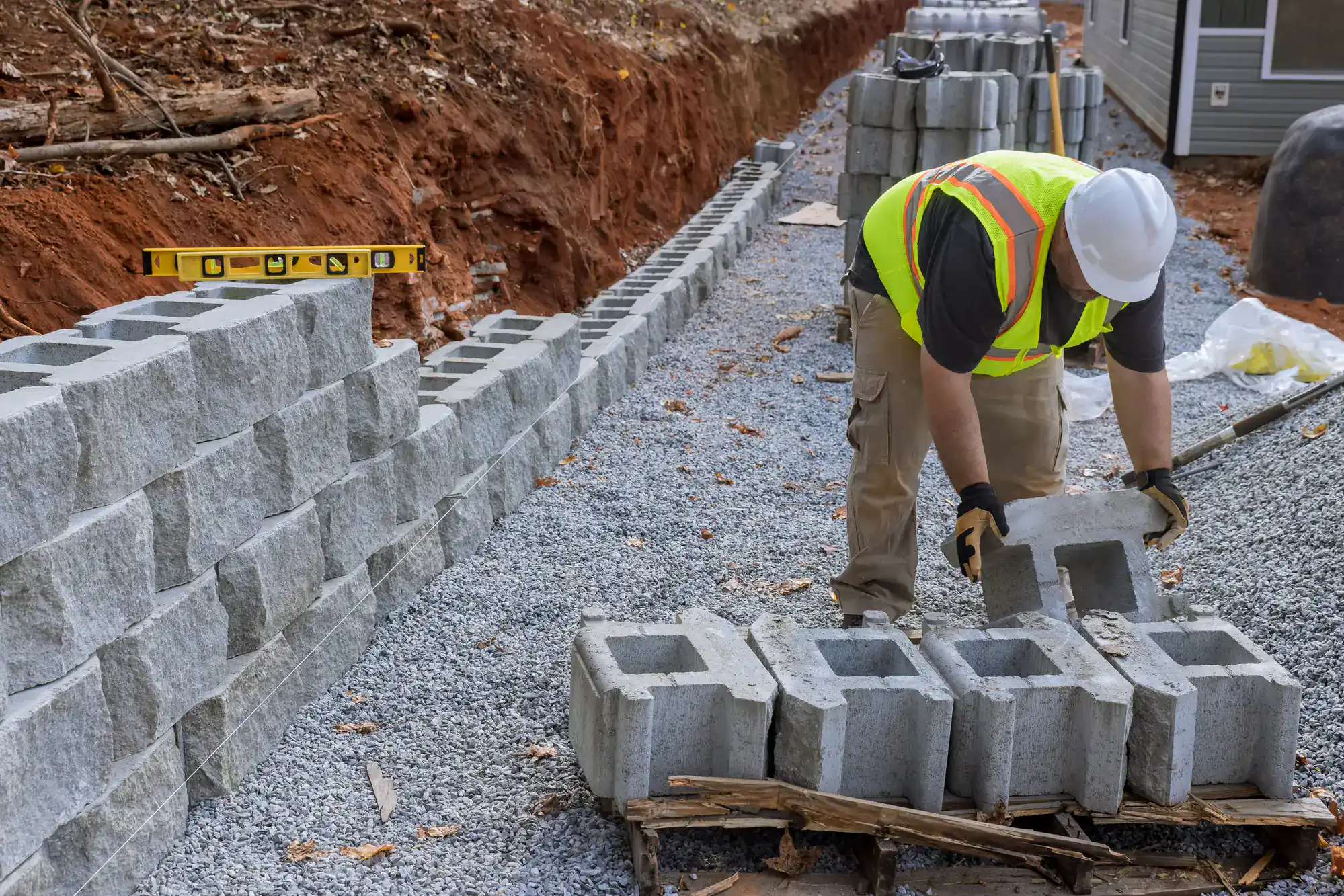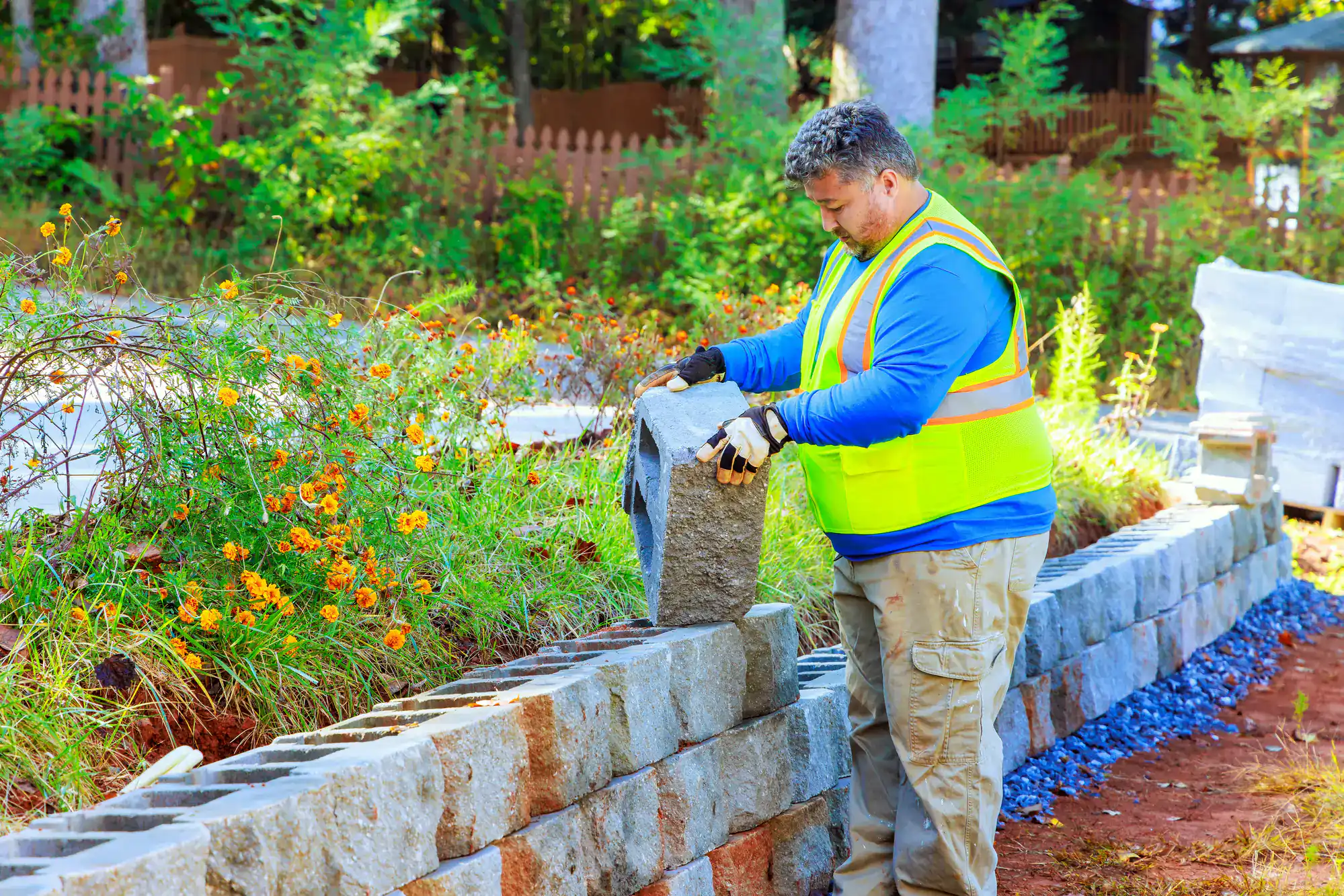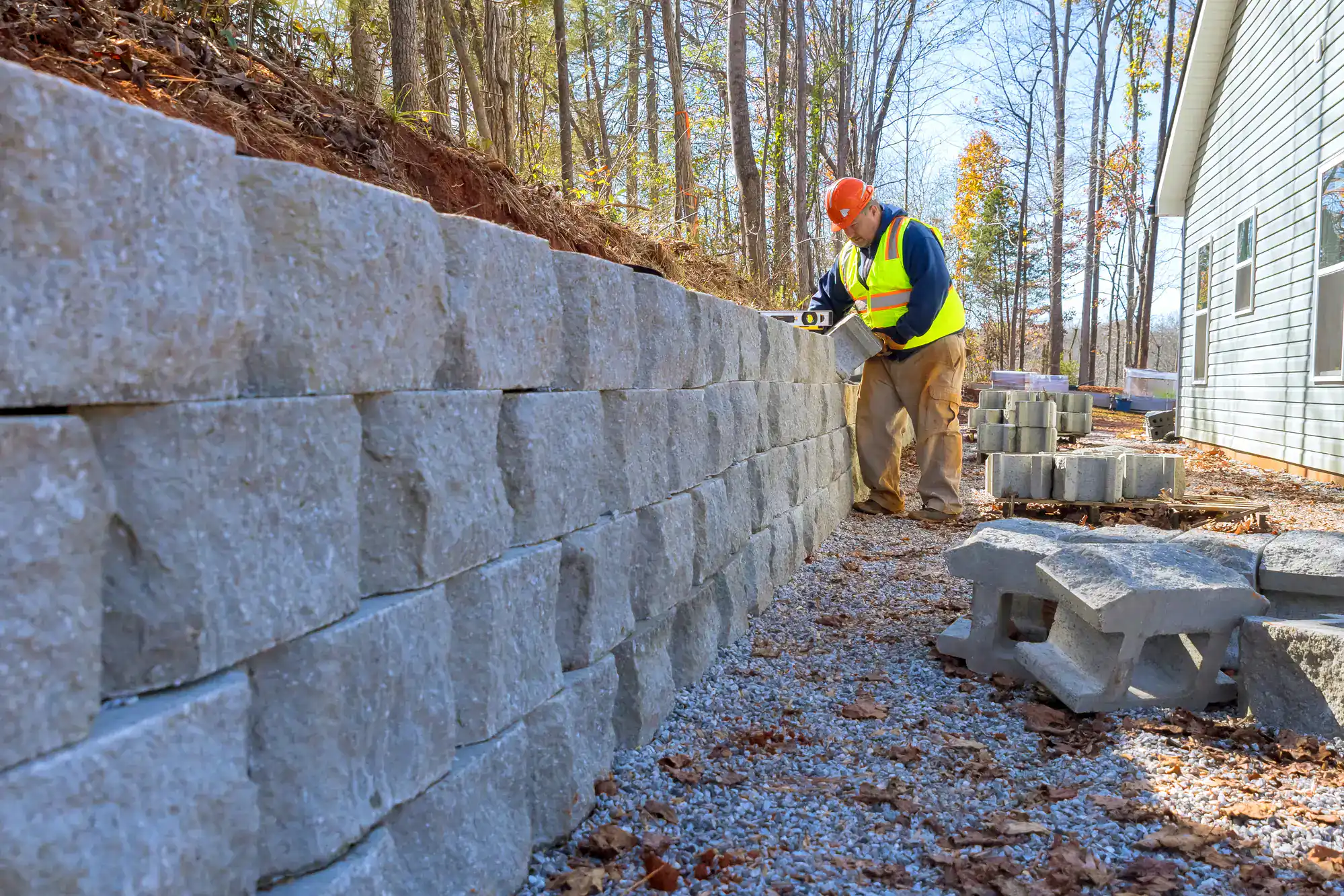

You know that sinking feeling when heavy rains hit and you’re watching water rush down your slope, taking soil with it. Maybe you’ve already seen some erosion damage, or you’re just tired of having unusable space where a hill sits.
A properly built retaining wall changes everything. Instead of losing soil every storm season, you get stable ground that actually stays put. Instead of that unusable slope, you get level space for landscaping, patios, or just peace of mind.
The difference between a wall that works and one that fails comes down to understanding Hernando’s specific soil conditions and drainage needs. When it’s done right, you stop thinking about erosion and start enjoying your property.
Since 1995, we’ve been the family business Citrus County turns to when they need retaining walls that actually work. We’ve seen what happens when walls are built wrong – the bulging, the cracking, the expensive repairs.
That’s why we focus on getting it right the first time. We’re authorized contractors for Tremron, Flagstone, and Belgard, which means we know these materials inside and out. We’re also the exclusive Seal ‘n Lock distributor in the county.
What really matters is this: we live here too. We’ve handled hurricane cleanup, we support local programs, and we’re proud members of the Citrus County Chamber of Commerce. When we build your wall, we’re building it for neighbors.

First, we assess your specific site conditions – soil type, drainage patterns, and slope challenges. This isn’t guesswork; it’s how we determine what type of wall will actually work long-term in your location.
Next comes proper excavation and foundation prep. Most wall failures happen because this step gets rushed. We dig deep enough, level correctly, and install the drainage systems that prevent hydrostatic pressure buildup – the silent killer of retaining walls.
Then we build your wall using manufacturer-approved techniques and materials. Each course gets checked for level and proper setback. We install drainage behind the wall and backfill with appropriate materials.
Finally, we clean up completely and walk you through maintenance basics. You get a wall that’s built to handle Hernando’s weather for decades, not just the next few seasons.

Ready to get started?
Your retaining wall project includes complete site evaluation, proper excavation, foundation preparation, and professional installation using quality block materials. We handle drainage systems, backfill, and cleanup.
In Hernando, we see a lot of sandy soils mixed with clay layers, which creates specific drainage challenges. Your wall gets designed for these local conditions, not some generic approach that works elsewhere.
We also handle permitting when required. Walls over certain heights need permits and sometimes engineering – we know the local requirements and can guide you through the process.
You get materials from trusted manufacturers we’re authorized to install, proper installation techniques that prevent common failure modes, and a team that’s been doing this work in Citrus County since the mid-90s. No surprises, no shortcuts, no wondering if it’s going to hold up.

Retaining wall costs in Hernando typically range from $3,000 to $15,000 depending on height, length, and materials used. Simple decorative walls start around $2,000-$3,000, while larger structural walls requiring permits and engineering can reach $10,000 or more.
The biggest cost factors are wall height (taller walls need more engineering), total length, material choice, and site conditions. Difficult access or poor soil conditions can increase costs. We provide detailed estimates after evaluating your specific site, so you know exactly what you’re investing in before we start.
In most areas of Florida, including Hernando, retaining walls over 3-4 feet typically require permits. Some municipalities require permits for walls over 30 inches. Walls over 6 feet generally need engineered designs in addition to permits.
The permit process usually costs $65-$585, but engineering fees can add $2,000-$3,000 to your project. We handle permit applications and know local requirements, so you don’t have to navigate this process yourself. It’s always better to check requirements upfront than deal with code violations later.
Segmental retaining wall blocks work exceptionally well in Florida’s varied soil conditions. These interlocking concrete blocks handle our sandy soils, clay layers, and drainage challenges better than poured concrete or natural stone in most situations.
The key is proper drainage design behind the wall. Florida’s heavy rains create hydrostatic pressure that can destroy walls without adequate drainage. We install drainage systems, use proper backfill materials, and ensure water can escape rather than building up behind your wall. The wall material matters, but the drainage system is what keeps it standing long-term.
Properly built retaining walls in Florida typically last 50-100 years when constructed with quality materials and correct installation techniques. The biggest threats to longevity are poor drainage design, inadequate foundation preparation, and using materials not suited for our climate.
Florida’s challenges include heavy seasonal rains, occasional hurricanes, and soil that can shift with moisture changes. Walls built without proper drainage often fail within 5-10 years due to hydrostatic pressure. That’s why we focus heavily on drainage systems and use materials proven to handle our climate conditions. Regular inspection and minor maintenance can extend wall life even further.
Yes, properly designed retaining walls significantly improve drainage and reduce flooding risks. They slow down water flow across slopes, direct runoff away from problem areas, and can incorporate drainage systems that manage water more effectively.
In Hernando, we often see properties where sloped yards channel water toward homes or create standing water problems. A retaining wall system can redirect this flow, create level areas that don’t flood, and incorporate French drains or other drainage solutions. The key is designing the wall as part of an overall water management strategy, not just soil retention.
Retaining wall failure usually shows up as bulging, cracking, tilting, or gaps between blocks. Most failures stem from drainage problems, inadequate foundation work, or using inappropriate materials for site conditions. Early intervention almost always costs less than complete replacement.
Common repairs include improving drainage, rebuilding sections with proper foundation work, or reinforcing existing walls. Major failures requiring complete rebuilds can cost $5,000-$15,000 or more. That’s why proper initial construction is so important – it’s much cheaper to build it right the first time than to fix it later. We warranty our work and can assess existing walls to determine the best repair approach.
Useful Links